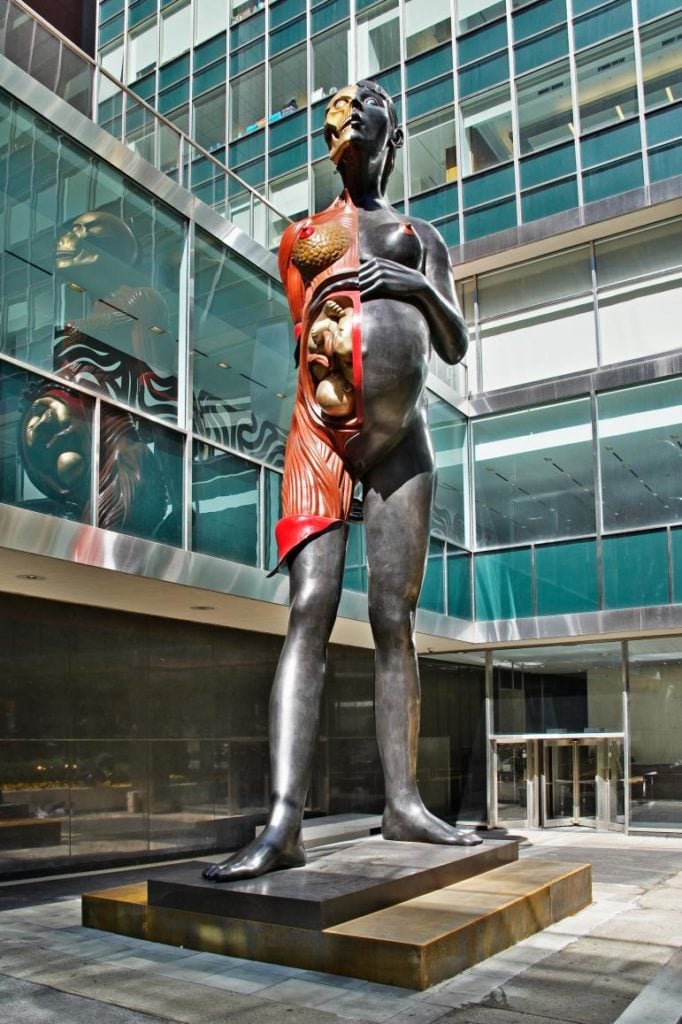Art World
Damien Hirst Statue Irks Long Island Locals


Sarah Cascone

Long Island residents aren’t responding positively to Damien Hirst’s 33-foot-tall bronze sculpture of a naked pregnant woman with cut-away views of her innards including muscles, skull, and fetus, reports Newsday.
The piece has been installed on the grounds of Old Westbury’s historic A. Conger Goodyear House (1938) by real estate mogel Aby Rosen, the landlord whose attempts to evict Pablo Picasso’s gigantic, fragile Le Tricorne tapestry from the Seagram’s Building in New York City have led to a lawsuit from the New York Landmarks Conservancy. The Long Island property is owned by a limited liability corporation of which Rosen is a managing member.
The Virgin Mother, which has previously been displayed in the courtyard at the Lever House in New York City, shows nearly half of the woman’s insides, much of which have been painted a gory red. The work, which is one of a series of three by the British artist, is meant to evoke Edgar Degas’s Little Dancer of Fourteen Years (circa 1881).
“It’s out of character with the neighborhood,” mayor Fred J. Carillo told Newsday. “We have to appease the residents; they have to preserve their bucolic views. The question is, does it belong in Old Westbury? Does it belong on a residential property?”
Village officials claim the work did not have a proper building department permit or architectural review board approval. They believe the statue should be relocated to a different part of the grounds that is not visible from the street.
Carillo also has suggested rotating the work “in such a way that the graphic portion faces Rosen’s house and not the resident.” However, he does believe that the statue could be appropriate in a different setting. “At a medical building I think it would be a magnificent piece, especially OBGYN,” Carillo told CBS New York.
In response to the unpopular work, the city is considering passing an ordinance that would limit the height of accessory structures, including statues, to 25 feet. In the meantime, the estate’s landscape architect, David Kelly, has obscured the work with black mesh fabric so as to avoid causing further offense, telling CBS “we don’t want to be insensitive.”